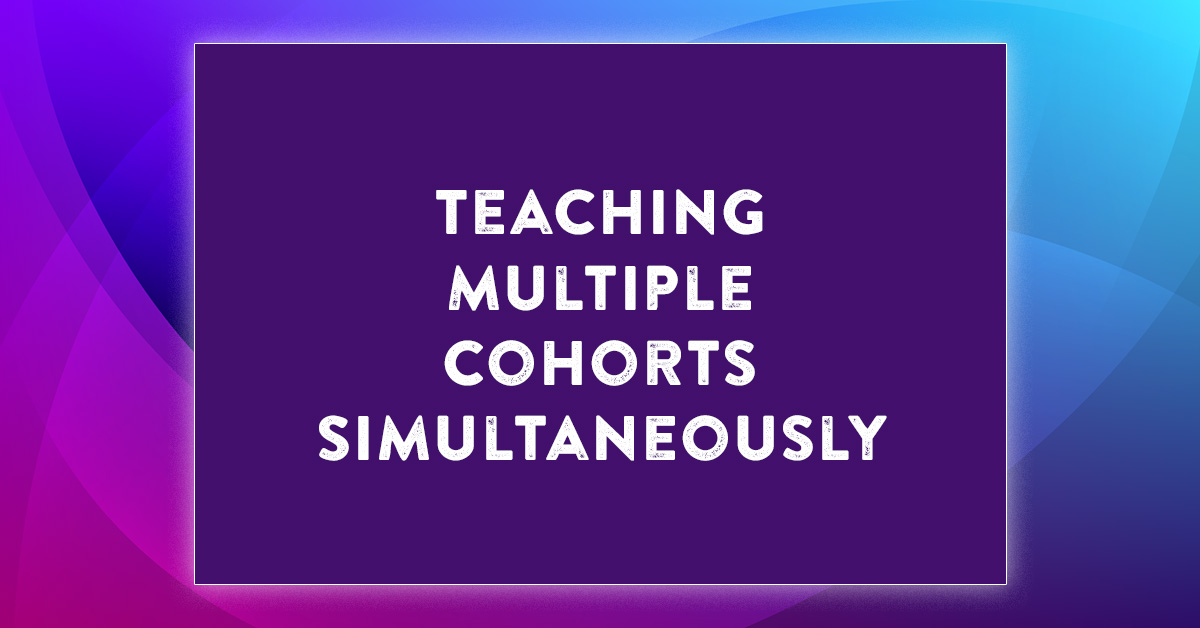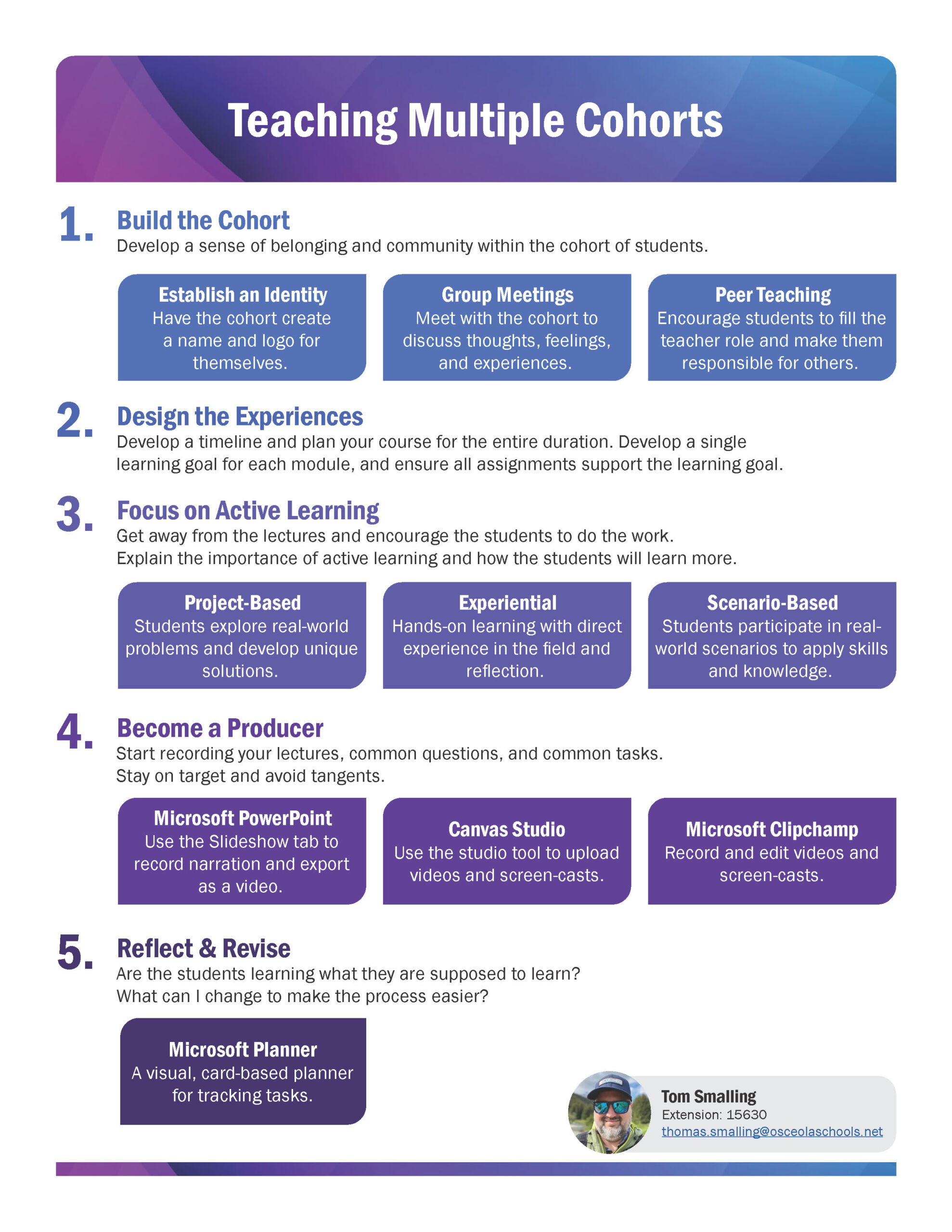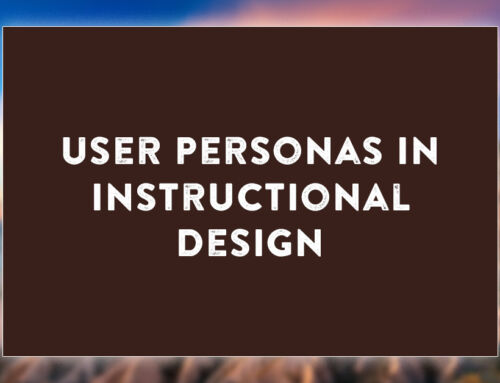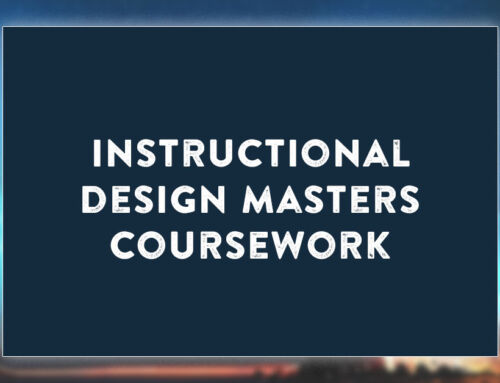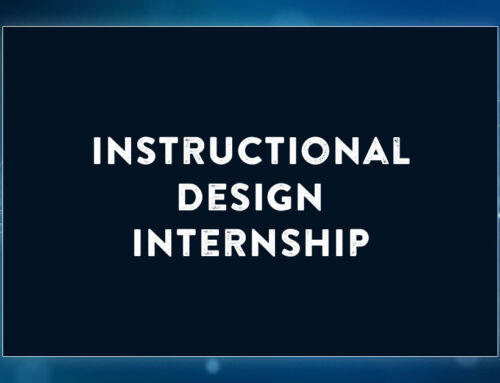Teaching multiple cohorts of students simultaneously is a difficult challenge for teachers, especially for career and technical education (CTE) teachers who don’t always have a formal background in education. In this post, I will talk about some of the tools and techniques I have used to transform my digital design program into an active learning environment where the students are in control of their learning.
Background Information
Multiple cohorts are often used in classrooms where the enrollment for individual classes cannot support various instructors. In my specific scenario, I teach adult students for six hours daily. I also have morning and afternoon sessions for dual enrollment students who rotate through the course during the day. This setup means I have three distinct cohorts of students in the course.
Sometimes, the school also opens enrollment in the spring, adding a second cohort of adult students. To thrive in this changing environment, it’s vital to design a course in which students can make choices about their education and stay engaged in the content. My goal when designing the course is to create a self-directed student who takes control of their learning process.
Multiple Cohort Solution

My solution involves three distinct areas in the classroom. The first is building the cohort of students to ensure they function as a community. The second is developing learning experiences for the students to ensure they are engaged. The third is continually reflecting and revising the content to ensure students learn the proper content to the desired depth of knowledge.
Build the Cohort
To build the cohort, it’s vital to build a sense of community. Open the communication channels for the students and permit them to talk to one another. Foster an inclusive environment where the students help one another. As a teacher, you must engage the students in collaborative learning projects. Working together promotes the sense of community you’re looking to build. Cohorts of students are a strength when they look out for each other and help each other learn.
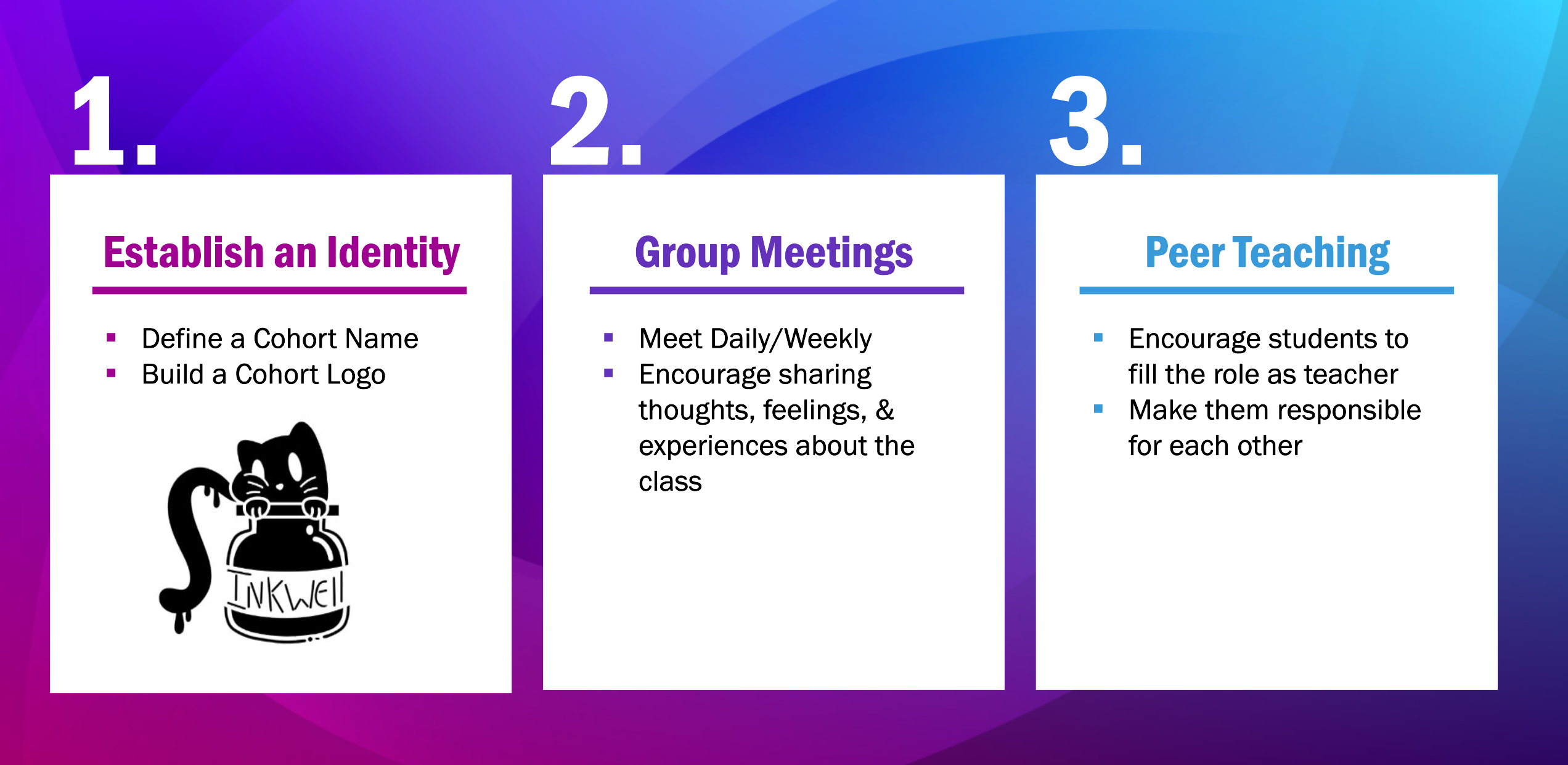
Design the Experiences
When teaching multiple cohorts, it’s essential always to have a plan for the students. The planning aspect can be monumental since the cohorts are in different course portions at any time.
Planning the Experiences
The following steps document how I’ve planned each course within the Digital Design program.
Start with the Big Picture
Start by looking at your standards and chunking the content into natural modules to teach. I like using modules because these translate into Canvas LMS easily. Think about your time for each module and apply how much you would like to spend in each module.
Define the Learning Goals
Once the modules are created, start developing a learning goal for each module. This learning goal will help you define and focus the learning activities within the module. I’m not going to get into the details of writing good learning goals, but they should all be specific and aligned to your standards, with actions and timeframes for the learners.
Choose the Learning Activities
Once you have a timeline and learning goals, it’s time to fill in the time with activities. Take a critical look at the activities for each module and apply a timeline to the activities. As you plan, don’t be surprised if the students take five times longer than you do to complete the same tasks.
Build the Module
Once you have the plan, it’s time to jump onto Canvas and start building the modules. For this post, I’m not going to jump into the details of building in Canvas. There are many resources available online to help you develop your content, as well as district-based resources.
Rethink the Lectures
It’s no secret that students learn better through active learning activities in the classroom. However, teachers and students still resist these methods of teaching. It’s cognitively complex for the students to do the work, and they need the practice to prepare them for the workplace of the future. Below are some frameworks to consider in the classroom as you move away from your lectures.
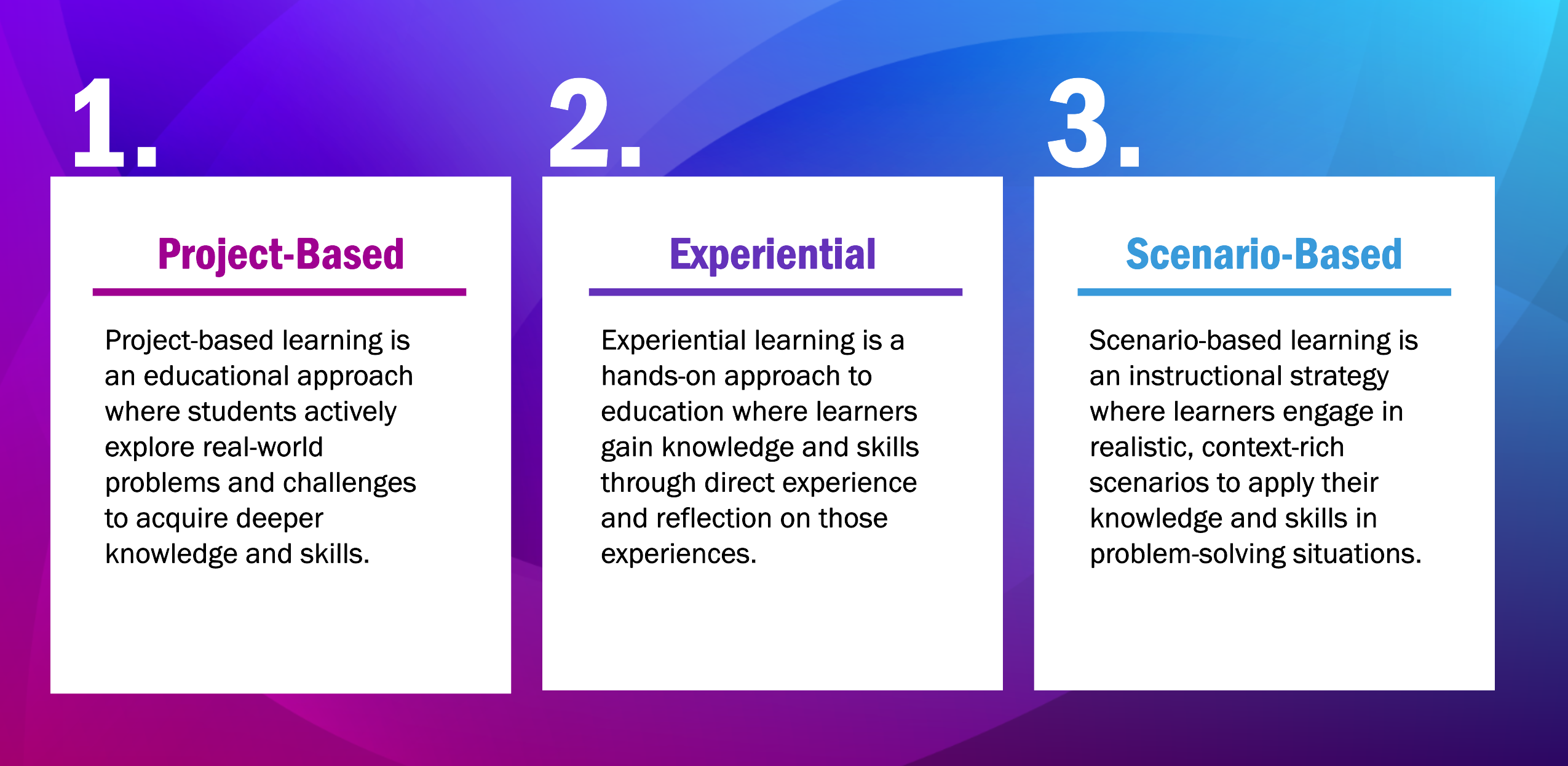
Become a Producer
One of the biggest changes in my classroom was embracing recording content for the students. This started with short videos of commonly asked questions, and now it’s become instrumental in keeping the students engaged without me actively lecturing. If you’re considering recording lectures, start small. Take some frequently asked questions and record a video for the students. You can easily record the video on Canvas or use another tool to upload the video. I prefer this method over finding YouTube videos because the students have a personal connection with me.
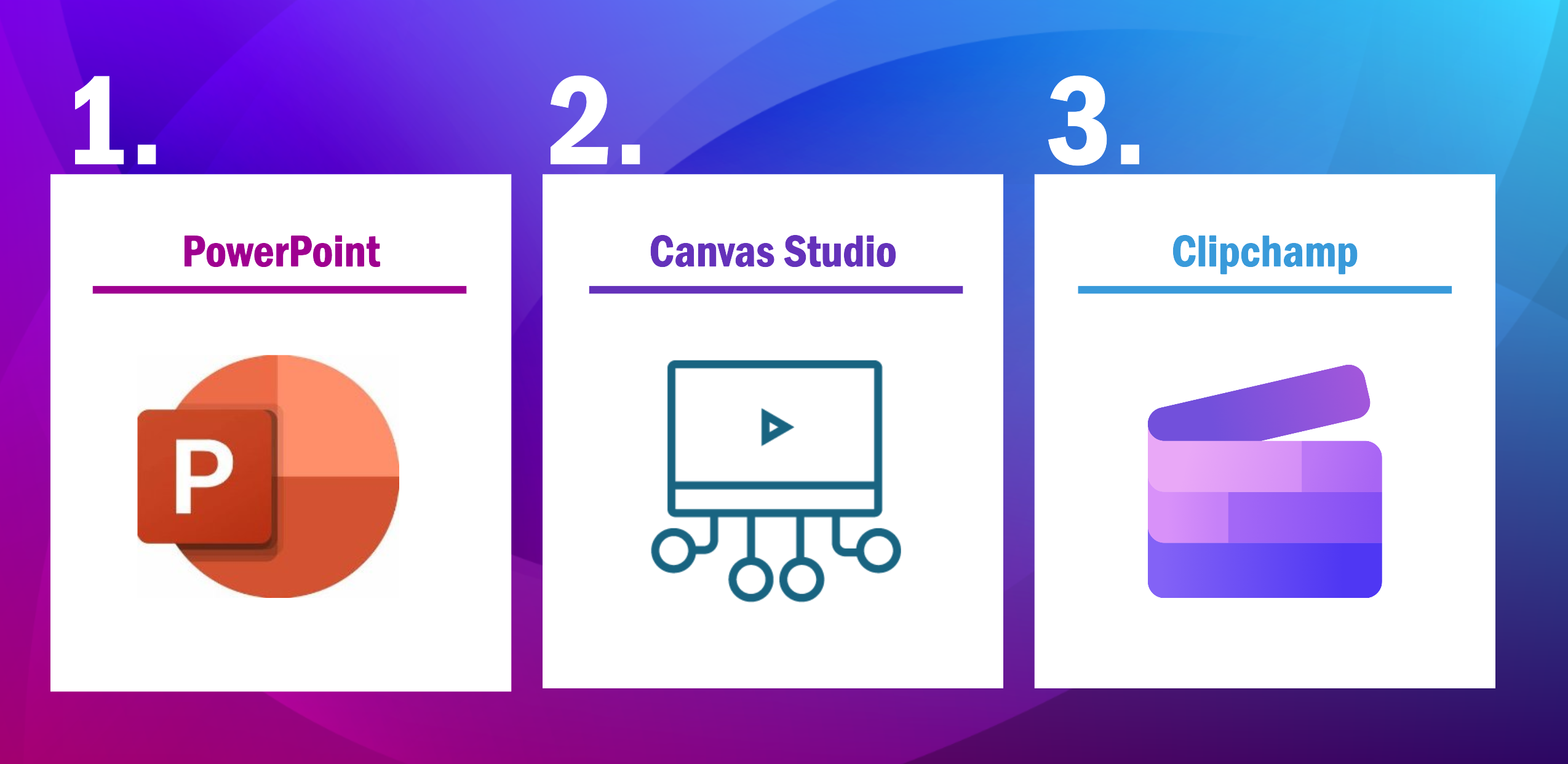
Assess and Reflect
Once you’ve implemented the module in the classroom, it’s time to reflect on how the learning is progressing for the students. Use these questions to guide your reflections:
- Are the students learning what they are supposed to learn?
- Are the students missing content?
- What can I change to make the process easier?
It can be difficult to make changes while the students are progressing through the course, so consider using a tool to track changes you’d like to implement. I’ve found Microsoft Planner to be a great tool for tracking tasks for each course. I can add notes to the tasks to ensure I remember in the future why I was frustrated or felt the change needed to be implemented.
Wrapping Up
Teaching multiple cohorts can be a frustrating experience when you first start. The classroom will feel very hectic and out of control. Take a deep breath and start working one small module at a time. I’ve been teaching multiple cohorts for over a decade, and it wasn’t until five years into the development of the course that I felt a difference in the classroom. Now, when I come in, the students are moving forward, and I’m enjoying the learning process and able to fill the role of learning facilitator.
